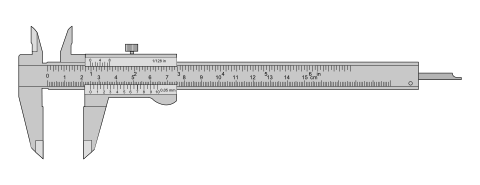Pierre Vernier facts for kids
Pierre Vernier (born August 19, 1580, in Ornans, France – died September 14, 1637, in Ornans) was a French mathematician and inventor. He is famous for inventing the vernier scale. This special scale helps us measure things very precisely. Many measuring tools, like calipers, use his invention.
Life and Inventions
Pierre Vernier was born in Ornans, a town that is now part of France. His father taught him about science and math. As an adult, Pierre held important positions. He was a captain and in charge of the castle in Ornans for the King of Spain. He also worked as a government advisor for the region.
In 1631, Pierre Vernier published a book in Brussels. In this book, he described his amazing new invention: the vernier scale. This scale made it much easier to measure small distances and angles accurately.
How the Vernier Scale Works
Imagine you have a ruler. A vernier scale is like a smaller, sliding ruler that moves along the main one. It helps you read measurements that are in between the smallest marks on the main ruler.
For example, Vernier first thought of adding his scale to a quadrant. A quadrant was a tool used to measure angles. His new scale allowed people to measure angles down to very small parts, called minutes. You could find the exact measurement by seeing which lines on the two scales matched up.
Naming the Scale
Before Vernier, another person named Pedro Nunes had a similar idea, but it was different. His invention was called the nonius. For a while, people mistakenly called Vernier's scale the nonius too.
However, a scientist named Jérôme Lalande later showed that Vernier's invention was unique. He made sure that the special sliding scale was correctly named after Pierre Vernier. Today, we still call it the vernier scale. You can find it on many precise measuring tools like calipers, sextants, and barometers.
See also
 In Spanish: Pierre Vernier para niños
In Spanish: Pierre Vernier para niños



